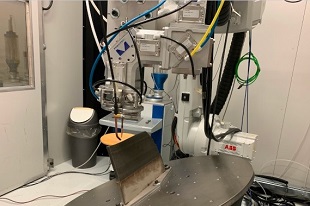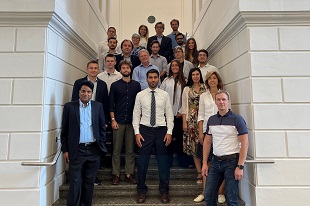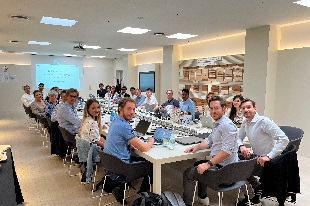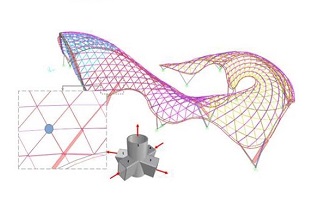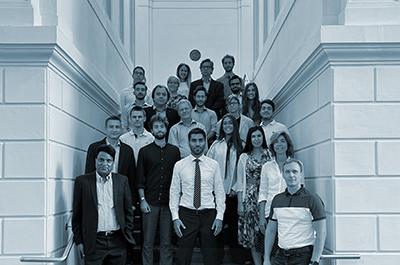
The interdisciplinary project EU-RFCS CONSTRUCTADD kicked-off on 8 September 2022 in Milan, aiming to place the Metal Additive Manufacturing (AM) in the mainstream of architecture and construction by the year 2026.
Politecnico di Milano will coordinate the project with partners RWTH Aachen University, Università di Pisa, Prima Additive, BLM GROUP, FOMAS Group MIMETE, ArcelorMittal, Vallourec, IMDEA Materials Institute, Cimolai Group, DNV. The project is funded by European Research Executive Agency (REA) Research Fund for Coal and Steel #RFCS (2022-2026). Polimi joins the project with two departments namely Department of Architecture, Built Environment and Construction Engineering and the Department of Mechanical Engineering. The researchers of MeccPolimi will contribute by coordinating the activities in process and material development using a novel construction steel grade for metal AM. In particular, the MeccPolimi team coordinated by Prof. Barbara Previtali and Prof. Ali Gökhan Demir will develop the processes towards the production of full scale demonstrators using metal AM with powder and wire feedstocks and laser welding processes.
CONSTRUCTADD aims to bring metal additive manufacturing in the mainstream of steel construction community by developing rules and procedures and regulate it for sustainable steel construction applications. Three Metal AM processes will be studied targeting architectural engineering and construction industry: Laser Powder Bed Fusion (LPBF), Laser direct energy deposition (LDED), Wire arch additive manufacturing (WAAM).
The global objective of CONSTRUCTADD is to contribute to Europe’s steel industry to start making full use of Additive Manufacturing (AM) in the design, production and maintenance of complex and large steel geometries to offer resource-efficient and reliable products with reduced waste and energy consumption. To achieve the ambitions of the project, specific objectives have been formulated:
- Define specific AM material and process rules for large parts on quality, cost, processing, life cycle & recyclability, material safety specifications and aesthetics.
- Selection of two powder and two wire feedstocks for production as construction steel and quantify their processability with Laser Powder Bed Fusion (LPBF), hybrid Laser Directed Energy Deposition (LDED), and Laser Metal Wire Deposition (LMWD) in combination with laser welding, and an innovative approach to Wire Arc AM (WAAM) based on Cold Metal Transfer (CMT), quantify their recyclability and mechanical properties.
- Design and produce demonstrator parts using the LPBF, LDED, WAAM, and apply welding technologies with process parameters defined in the project.
- Experimentally quantify the mechanical properties of 3D-printed steel parts, and their structural integrity with the conventional steel elements.
- Prepare the compliance route for construction parts produced by AM, introduce qualification, standardization, and certification templates compatible with EN1090, and propose modifications to the existing European building standards and regulations using the new experimental outcomes.
- Perform environmental and economic life-cycle analysis to establish commercial and environmental benefits, and break-even points for AM in steel industry.
- Transfer research results to Eurocode-compatible design recommendations, guidelines and worked examples, to be used by the European engineers, architects, and manufacturers.
- Disseminate and exploit the project findings in the EU construction community to accelerate the acceptance of modern steel fabrication approach studied in the project.
By exploiting the power of additive manufacturing, CONSTRUCTADD will accelerate the transition of the steel construction sector toward a sustainable production of structural systems. We aim to show that the sector can reduce the energy consumption of fabricating a joint by approx. 30% and create less waste during fabrication, than existing manufacturing methods. AM will also unleash the sector from the constraints of traditional manufacturing and enable mass customization with increased production speed and quality, by placing materials where needed and using advanced digital tools for design and production.
CONSTRUCTADD plans to reduce the energy consumption by means of:
- Reducing the weight of critical complex parts while satisfying the functional design requirements (e.g. strength, stiffness) with the developed Structural Design for AM (SDfAM) approach.
- Customizing the joint geometries (shape and wall thickness) locally to the internal stresses, moving the welds and the geometrical discontinuities away from the geometrically complex regions to be able to orthogonally bolt or weld them to the conventional steel profiles, decreasing the material and energy use hence the costs, and render the welds more accessible for periodic inspection and maintenance.

